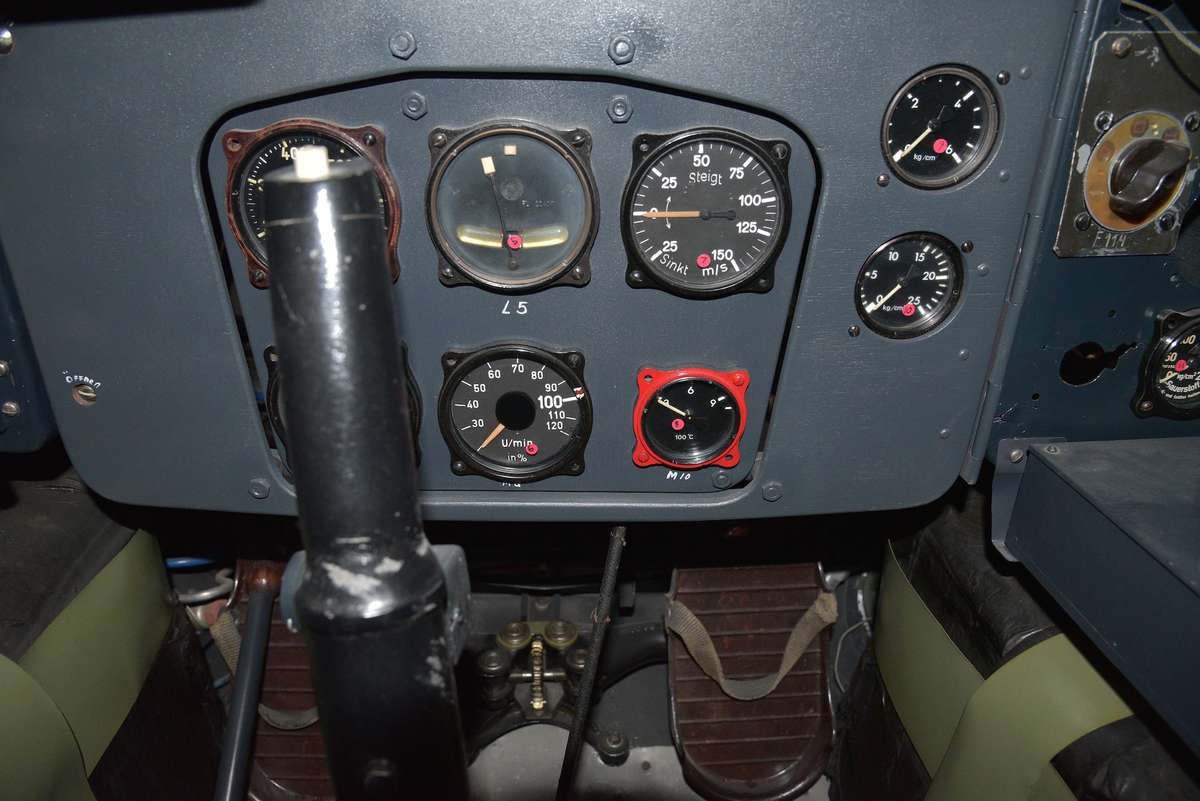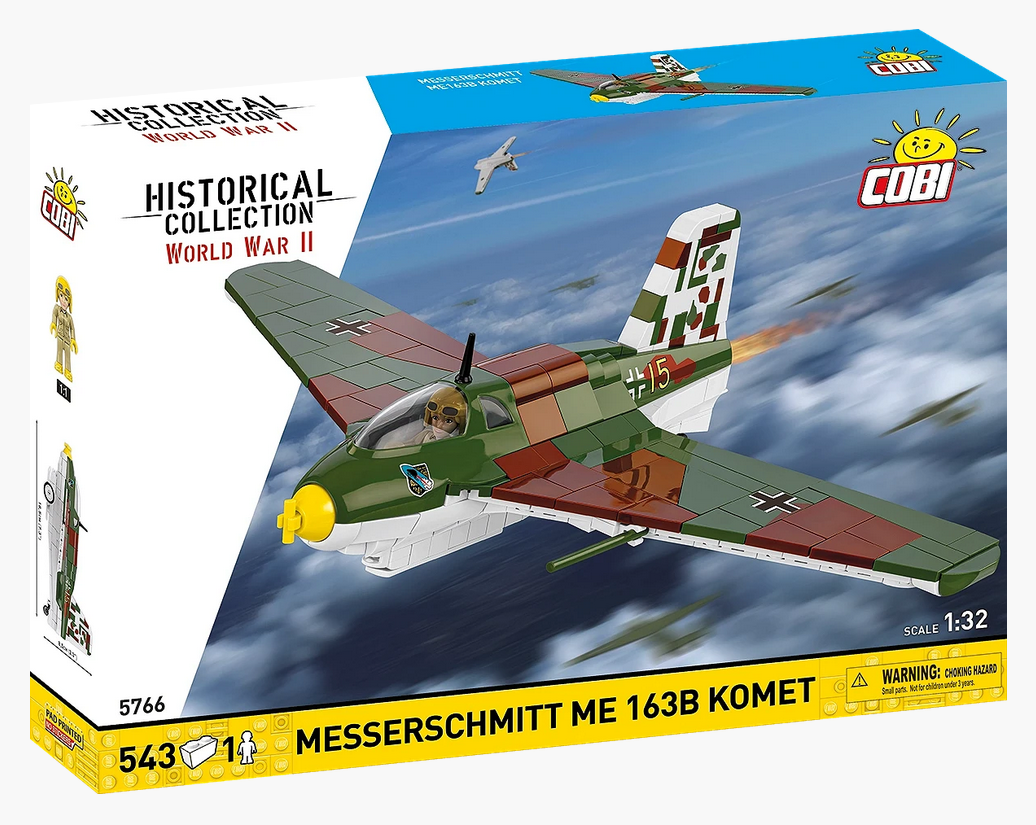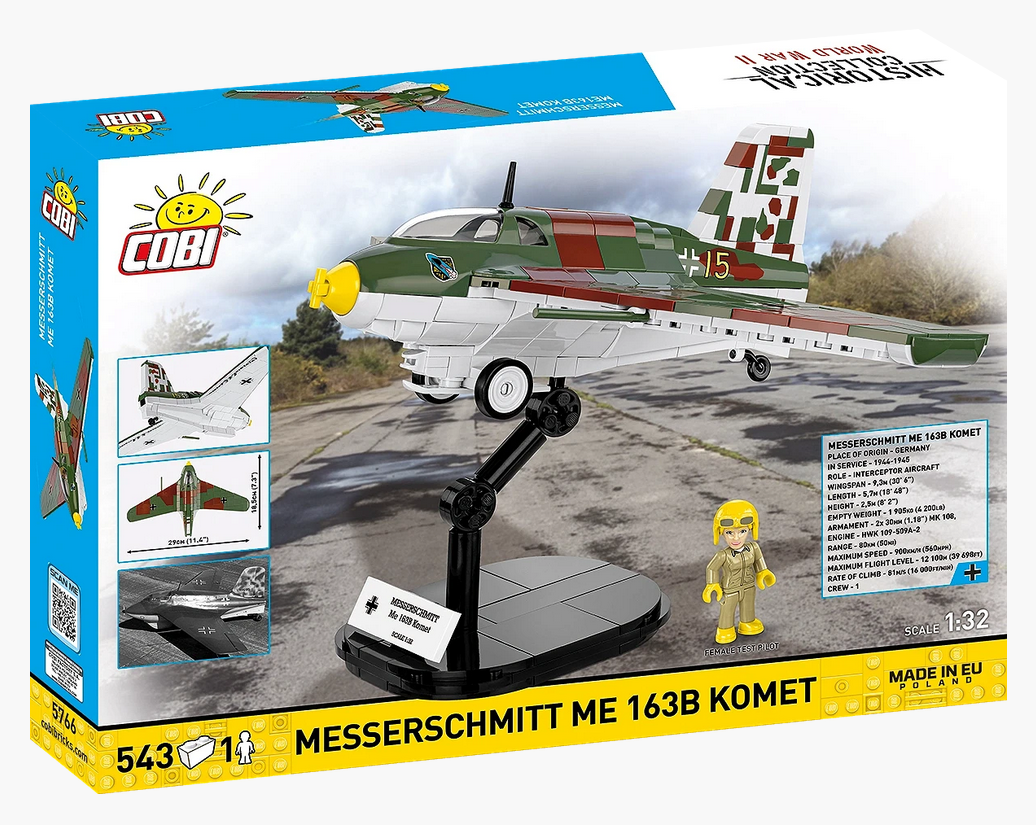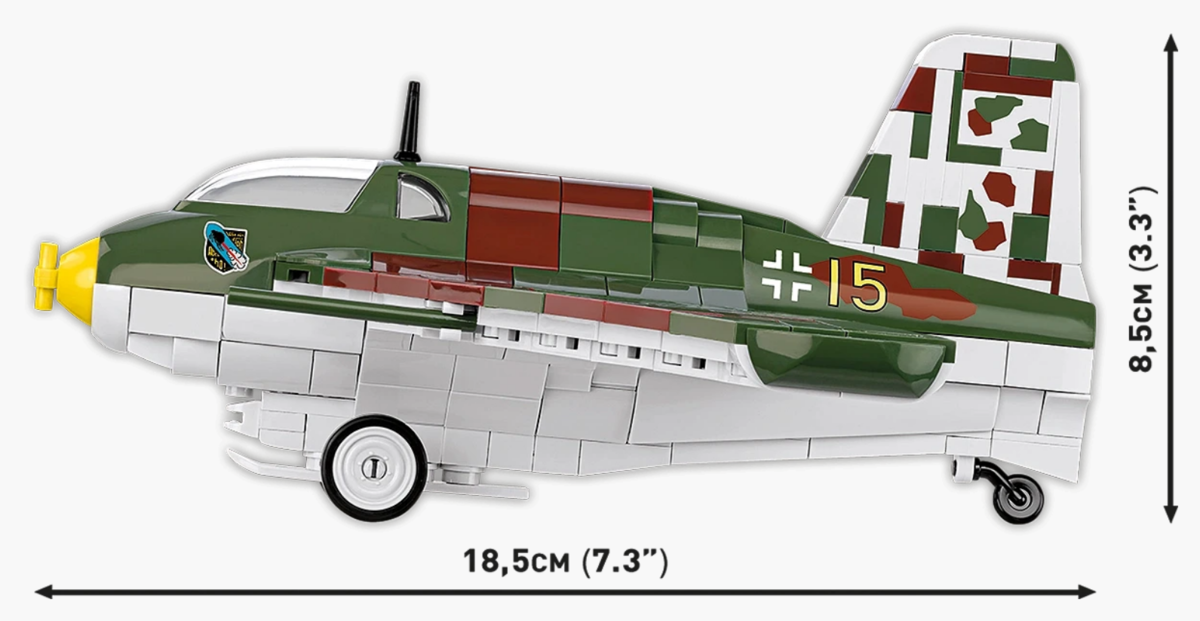
Rocket-Powered Fury of WWII
Quick delivery update before I launch into the model of the month feature. Our COBI order is due to arrive Monday or Tuesday next week - see last week's blog for which new releases are included. There is also a new Sluban order due on Monday. Check out the Back-orders collection for any out of stock models returning early next week - see individual product pages for expected delivery dates.
Warmest wishes,
Zoë
Warmest wishes,
Zoë
Brick Model of the Month
When most people think of World War II aircraft, names like the Spitfire or Mustang come to mind. But one plane stood out not for its combat success, but for its sheer audacity: the Messerschmitt Me 163B Komet — the world’s only operational rocket-powered fighter.
A Glimpse Into the Future
Developed by Alexander Lippisch, the Me 163B Komet pushed aviation to its limits. With its strange, tailless design and liquid-fueled rocket engine, the Komet could reach an astonishing 950 km/h (590 mph) — unmatched at the time.
“It was like riding on a cannonball.”
– Hanna Reitsch, Germany’s renowned female test pilot
FAST FACTS
Feature Detail Role | Rocket-powered interceptor
Designer | Alexander Lippisch
Manufacturer | Messerschmitt AG
First flight | September 1, 1941
Operational period | 1944–1945
Top speed | ~960 km/h (596 mph)
Rate of climb | 5,000 m/min (16,400 ft/min)
Powerplant | Walter HWK 109-509A-2 rocket motor
Armament | 2 × 30 mm MK 108 cannons
Total built | 370+
Operational unit | Jagdgeschwader 400 (JG 400)
Designer | Alexander Lippisch
Manufacturer | Messerschmitt AG
First flight | September 1, 1941
Operational period | 1944–1945
Top speed | ~960 km/h (596 mph)
Rate of climb | 5,000 m/min (16,400 ft/min)
Powerplant | Walter HWK 109-509A-2 rocket motor
Armament | 2 × 30 mm MK 108 cannons
Total built | 370+
Operational unit | Jagdgeschwader 400 (JG 400)

Captain Eric Brown RN, pilot who flew a powered Me 163, described the takeoff experience:
“...the resultant climb was ‘like being in charge of a runaway train’,” as the aircraft soared to 32,000 ft in just 2 minutes 45 seconds."
Built to Intercept
Armed with two devastating 30mm MK 108 cannons, the Komet's mission was simple: shoot down Allied bombers in a blindingly fast attack run. But the glory was short-lived. Its limited fuel gave it just minutes of powered flight, and its volatile fuel mix (T-Stoff and C-Stoff) was often more dangerous to the pilot than the enemy.
Combat Performance
Meant to shoot down Allied bomber formations, the Komet could out-climb and out-speed any Allied fighter. Its tactic was a near-vertical ascent, fire a short burst from its 30mm cannons, then glide back to base.
But limitations were severe:
- 6–8 minutes of powered flight
- No ability to pursue or dogfight
-
Fragile and unarmoured under high G-forces
Despite its speed, it only downed 9–16 enemy aircraft before the war ended.
“We were faster than anything, but we were also flying on borrowed time.” — Pilot Rudi Opitz

Landing Nightmares & Pilot Risks
With no undercarriage, the Me 163B landed on a retractable skid after jettisoning its takeoff dolly. This resulted in violent landings, often damaging the aircraft or injuring the pilot.
Add to that:
- Zero throttle control: full thrust or nothing.
- Fuel handling deaths during maintenance and refueling.
-
Glide-only returns, making pilots vulnerable to attack.
“The Komet was as dangerous to its own pilots as to the enemy.” — Aviation historian Dan Sharp
Legacy: Seeds of Supersonic Flight
Though operationally unsuccessful, the Me 163B pioneered rocket propulsion and high-speed aerodynamics, influencing:
- The X-1 rocket plane (first to break the sound barrier)
- NASA’s X-planes
- Cold War interceptors
The Messerschmitt Me 163B Komet was an aircraft ahead of its time—a daring blend of genius and desperation in the final years of WWII. Though flawed in combat, it remains a technological milestone that inspired a new age of aviation.
Messerschmitt Me 163B Komet brick plane model - COBI 5766 - 543 bricks


The new model was released by COBI on 1st August and is due in stock on Monday!
- 543 bricks
- 1 female Luftwaffe pilot figure
- 1:32 scale
- Bodywork with pad printing
- Block stand with printed name of the plane
- Easy-to-follow instruction manual
- Compatible with other leading brands of construction blocks
- Model dimensions: L x H x W: 18.5cm x 29cm x 8.5cm


Where to visit a real Me 163B Komet in the UK
-
London: You can see the Me 163B “Yellow 6” at the Science Museum and another example in Hangar 5 at the RAF Museum London.
- Scotland: For the Me 163B‑1a “Yellow 15”, head to the National Museum of Flight in East Lothian.
And finally...
Watch the 11-minute video below for a gripping deep dive into the hair-raising history of this experimental aircraft — including how one Komet brought down a Lancaster bomber, why it has a tiny propellor and how it came to be known as the 'Acid fighter'.
 Skip to content
Skip to content


Dave Poulten
The Me 163 Komet film was absolutely excellent! Thank you for introducing it to me! Very informative and enjoyable